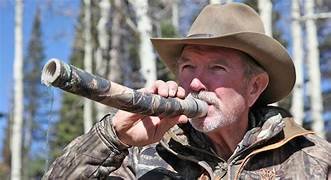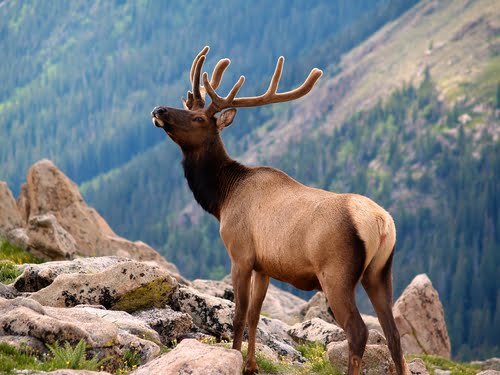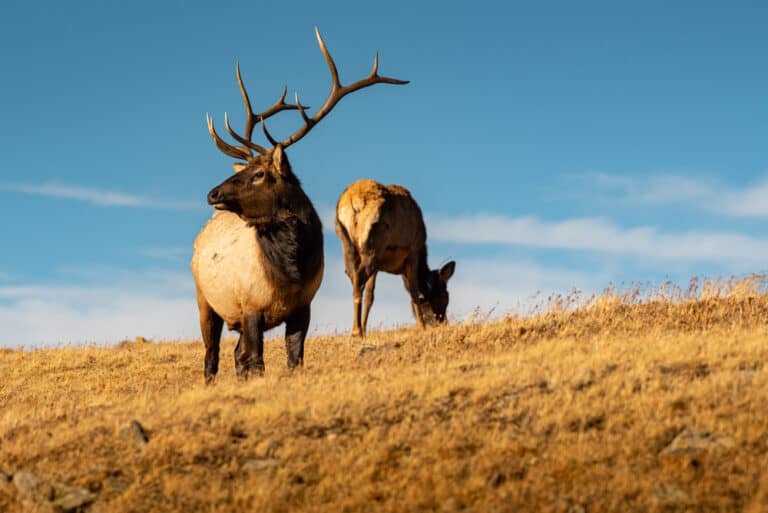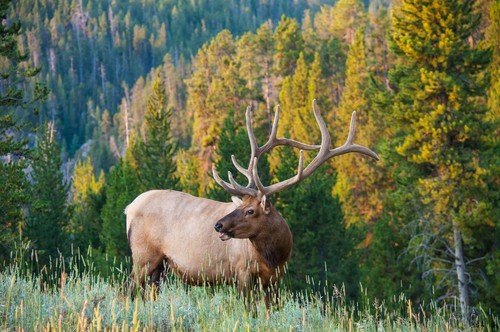Mastering the Art of Elk Calls: A Skill You Need to Know
Elk, scientifically known as Cervus canadensis, are majestic creatures that roam the vast wilderness of North America. With their imposing antlers and powerful stature, these magnificent animals have long captivated hunters and wildlife enthusiasts alike. One of the key elements in successfully hunting or observing elk is understanding and utilizing the elk call.
Elk calls are vocalizations hunters, or wildlife observers make to communicate with these creatures in their language. This article will delve into the fascinating world of elk calls, exploring their definition and immense importance in hunting and wildlife observation.
Definition of an Elk Call
An elk call can be defined as a vocalization created by humans to imitate the sounds made by elk. These sounds mimic various aspects of elk communication and behavior, such as bugling, cow calling, and calf calling. The primary purpose of an elk call is to attract or communicate with these magnificent animals for specific hunting or observation purposes.
Elk calls are typically produced using devices such as mouth diaphragms, external reed calls, or electronic callers replicating different vocalizations. Skilled hunters and experienced wildlife enthusiasts spend significant time mastering these techniques to create realistic imitations that grab elk’s attention.
Importance of Elk Calls in Hunting and Wildlife Observation
Elk calls are vital in hunting and wildlife observation endeavors involving these majestic creatures. Communicating effectively with them through accurate elk calls is paramount for hunters seeking to harvest an elk for its meat or trophy antlers.
During the rutting (mating) season, when bulls actively compete for dominance over a harem of cows, bugle calls become particularly crucial for hunters aiming to attract dominant bulls within range. By replicating bugling sounds indicating aggression or challenge between bulls, hunters can provoke responses from potential targets, increasing their chances of a successful hunt.
Elk calls also offer immense value in wildlife observation and research. By mimicking cow calls, observers can observe the social behavior and interactions between elk herds.
Researchers studying elk vocalizations for ecological or behavioral studies rely on accurate elk calls to gather data and gain insights into these fascinating creatures’ complex communication systems. Elk calls are an essential tool in the arsenal of both hunters and wildlife enthusiasts.
With their ability to imitate various elk vocalizations, these calls communicate between humans and these majestic creatures. Whether used for hunting purposes or scientific observation, mastering the art of elk calling is an invaluable skill that allows us to connect with the natural world and appreciate the wonders of these magnificent animals.
Overview of Elk Calls
Bugle Calls: The Language of Bulls
Bugle calls are among elk’s most iconic and distinctive vocalizations, particularly bull elk. A bugle call is a loud, resonant sound produced by a bull elk using its vocal cords and manipulations of its larynx. It serves as a means of communication between bulls, allowing them to establish dominance, attract mates, and defend their territory.
The primary purpose behind bugling is to communicate with other members of the herd, both males and females. Different types of bugle calls serve specific purposes.
Firstly, we have long-range bugle calls, which are powerful and carry over vast distances in open landscapes. These bulges are commonly used to locate other bulls or potential mates from afar.
Secondly, locator bugle calls are shorter and sharper. They aim to elicit responses from distant bulls who may be hidden or less vocal.
Challenge bulges are aggressive and forceful sounds used during the rutting season when bulls compete for dominance. These challenging bugles assert a bull’s strength and intimidate rivals.
Cow Calls: Luring the Ladies
While bull elk primarily use bugling to communicate, cow elk have their vocalizations known as cow calls. Cow calls attract males during mating season (estrus) or communicate with other cows in the herd.
Cow calls mimic various sounds made by female elk. Mews are one type of cow call that imitates the soft contact calls made between cows as they gather or move together within their social group.
These mews are gentle sounds that convey contentment and can be used throughout the year to lure curious bulls or maintain cohesion within herds. Chirps, on the other hand, represent higher-pitched cow vocalizations that typically indicate communication between cows.
These chirps may signal group cohesion, alerting other cows of potential danger or coordinating movement within the herd. When a cow is in estrus and ready to mate during the rutting season, she emits estrus cow calls.
These calls are distinct from mews and chirps and are designed to attract bull elk. Estrus cow calls communicate a female’s presence, availability, and receptiveness in heat.
Calf Calls: Mimicking Vulnerability
Calf calls are vocalizations made by young elk known as calves. These sounds serve multiple purposes for calves, including communication with their mothers and siblings or signaling distress or vulnerability when separated from the herd. Calf calls are often high-pitched and carry a sense of urgency.
The description of calf calls varies based on their context. A calf’s normal contact call is a soft mew-like sound that helps maintain cohesion with its mother and other herd members.
This call is essential for calves who might get separated during grazing or periods of heightened predator risk. When calves feel threatened or distressed, they emit distress vocalizations that resemble loud bleats or high-pitched screams.
These sounds are meant to attract attention from their mothers or other adults in the herd who can provide protection against predators or offer comfort during stressful situations. Elk have distinct vocalizations categorized into bugle calls (used by bulls), cow calls (used by cows), and calf calls (used by young elk).
Each type serves specific purposes related to communication within herds, attracting mates during mating season, establishing dominance among males, maintaining cohesion within social groups, and ensuring the safety and well-being of vulnerable individuals like calves. Understanding these different types of elk calls is crucial for hunters and wildlife observers alike in their efforts to study these majestic creatures or engage successfully in hunting activities while respecting their natural behavior.
Bugle Calls: The Language of Bulls
Anatomy of an elk bugle call
Elk bugling is a captivating language that bulls use to communicate with each other during various seasons and situations. To understand the art of bugling, it is essential to delve into the intricate details of its anatomy.
Vocalization techniques play a vital role in producing accurate and convincing bull sounds. Lip positioning is key, as elk manipulate their lips to create different pitches and tones.
Bulls can achieve higher or lower pitches in their bugles by tightening or loosening their lip muscles. Additionally, airflow control is critical in modulating the volume and duration of the sound emitted.
Moreover, another element to consider when exploring the anatomy of an elk bugle call is sound variation. Pitch variations occur naturally as bulls adjust airspeed while vocalizing.
In addition, duration plays a crucial role when communicating specific messages within their herd or asserting dominance over competing bulls. Bulls can prolong their bugles for extended periods to convey strength and stamina during competitions.
Bugling strategies for hunters
Elk hunting requires skillful implementation of various bugling strategies, enabling hunters to effectively locate and engage with these majestic creatures in their natural habitat. One common technique hunters employ is using long-range bugles to locate bulls in vast wilderness areas where visual contact may be challenging. By emitting loud and resonating calls, hunters aim to attract distant bull elk and gauge their responses based on pitch variations, which reveal proximity and interest levels.
Locator bulges are a powerful tool for eliciting responses from distant bulls that may be hidden or unresponsive to other calls. These locator calls imitate unfamiliar bull sounds or territorial challenges that provoke curious reactions from nearby elks seeking to assert dominance or investigate potential intruders.
During rutting season, challenge bulges become particularly effective, allowing hunters to assert dominance over competing bulls. These bulges mimic the calls of a dominant bull elk, signaling aggression and the intent to protect one’s harem.
By playing on the instinctual responses of rival bulls, hunters can provoke confrontations or lure in dominant bulls seeking to defend their territory. Understanding the intricate anatomy of an elk bugle call enables hunters to replicate these sounds effectively.
Employing various vocalization techniques and exploring sound variations contribute to creating realistic bugle calls that attract the attention of bull elks. Ultimately, strategic bugling techniques are essential for hunters seeking successful encounters with these majestic creatures in their natural habitat.
Cow Calls: Luring the Ladies
Anatomy of an elk cow call
Elk cow calls are essential for hunters looking to attract bulls during hunting or observe elk behavior in the wild. To effectively mimic a cow’s vocalizations, understanding the anatomy of a cow call is crucial.
The techniques used to produce accurate elk cow calls involve tongue placement and breath control. Vocalization techniques play a significant role in producing authentic cow sounds.
By manipulating the positioning of their tongues within their mouths, hunters can create various sounds that emulate those made by cows. For instance, positioning the tongue closer to the front teeth creates nasal mews, which imitate contented cows or calves.
Adjusting the tongue’s position towards the roof of the mouth can produce high-pitched chirps that simulate communication between cows. Sound variations in elk cow calls encompass more than tongue placement; breath control also plays a vital role.
Hunters must learn to control airflow while producing these calls to achieve desired sound variations. By adjusting airflow volume and speed, they can replicate different intensities of mews or chirps, adding realism to their calls.
Cow calling strategies for hunters
Mastering elk cow-calling strategies is critical for attracting bulls during mating season or establishing communication with herds for observation. Hunters employ various tactics depending on their objectives and environmental factors. Hunters commonly use mews to imitate a contented cow or calf sound, which puts bulls at ease and piques their curiosity.
This soft, nasal sound produced by manipulating tongue placement provides an effective way for hunters to establish themselves as non-threatening members of an elk herd. Chirps are another useful technique hunters employ to simulate communication between cows within an elk herd.
These high-pitched vocalizations resemble short bursts of sound made when cows interact with each other or their young. By producing chirps, hunters can create an illusion of a herd nearby, attracting bulls interested in joining the group.
During mating season, using estrus cow calls becomes particularly effective for hunters seeking to attract bull elk. These calls mimic the vocalizations of a female elk in estrus or receptive to mating.
Bulls, driven by their innate desire to reproduce, often respond enthusiastically to these calls, providing hunters with opportunities for successful encounters. By employing various cow-calling strategies and mastering the subtleties of tongue placement, breath control, and sound variations, hunters can significantly increase their chances of success during elk hunting expeditions or observing these majestic creatures in their natural habitat.
Calf Calls: Mimicking Vulnerability
Unleashing the Power of Innocence
Calf calls, or calf mews or whines, are essential to the elk caller’s repertoire. These vocalizations aim to mimic the sounds of young elk calves, and their purpose is to evoke a response from adult elk, particularly cows. Calf calls can effectively convey vulnerability and innocence, triggering maternal instincts in cows and drawing them closer.
Description and purpose of calf calls: Calf calls are characterized by their high-pitched, nasally sounds that resemble the distressed vocalizations of young elk calves.
The purpose of these calls is twofold: firstly, to elicit a protective response from mother cows who instinctively seek out their young ones when they perceive them in distress; secondly, to attract curious bulls who might be enticed by the opportunity to claim dominance over a vulnerable calf. Strategies for:
Observing and replicating the nuances of a real calf’s vocalization is crucial to maximize the effectiveness of calf calls. The key lies in producing high-pitched mews with slight variations in tone and rhythm to imitate a distressed or lost calf seeking its mother’s attention.
Additionally, incorporating intermittent pauses into the calling sequence can create a sense of hesitation or uncertainty, enhancing the illusion of vulnerability. When implementing calf calling strategies for hunting, it is essential to consider timing and location.
In early season hunts when elk are less responsive due to lower rutting activity, using subtle calf calls sparingly can pique curiosity without raising suspicion among wary bulls. As the rut intensifies during peak breeding season when bulls become more aggressive and territorial, strategically positioning yourself near areas with higher cow-calf activity can increase your chances of attracting both cows and dominant bulls.

Conclusion
Mastering the art of calf calls can significantly enhance an elk caller’s success in hunting and wildlife observation endeavors. These vocalizations tap into the primal instincts of elk, triggering protective responses from cows and drawing curious bulls closer.
By accurately mimicking a vulnerable calf’s delicate, high-pitched sounds through well-timed and nuanced calls, one can create a realistic illusion that allures elk into proximity. Remember, when engaging with wildlife, it is essential to prioritize ethical practices and respect for the animals.
While utilizing calf calls may serve as an effective strategy for attracting elk during hunts or capturing their behavior on camera, it is crucial to maintain a safe distance and avoid causing undue stress or disturbance. By approaching this skill with reverence for nature’s brilliance and employing responsible techniques, we can enjoy unforgettable encounters while contributing to the conservation and preservation of these majestic creatures.







Really great info can be found on blog.Raise blog range